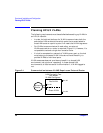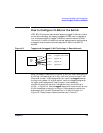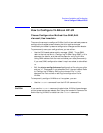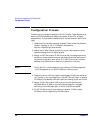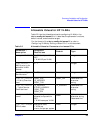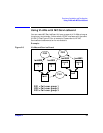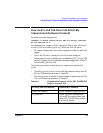
Overview of Installation and Configuration
Properties of a VLAN
Chapter 2 27
Properties of a VLAN
When a VLAN is created on a given LAN card port, (see “Creating a
VLAN”), the system generates a virtual PPA or VPPA which can be used
to send and receive 802.1Q tagged frames on that LAN card. Each
HP-UX VLAN has a Virtual PPA associated with it. A VPPA has
essentially the same properties as a physical point of attachment (PPA)
on a LAN card. The differences are:
1. A VPPA is associated with a VLAN, the properties of which are
determined by the create (or modify) command. The PPA of a
physical interface doesn’t have a VLAN associated with it.
2. A VLAN doesn’t have a unique hardware instance. VPPA values are
assigned such that they don’t overlap with hardware instance
numbers of physical interfaces on the system.
Note: the PPA assigned to a LAN card port is the same as its
hardware instance number.
3. A VLAN shares all the link properties of the physical interface on
which it is configured. Any changes to the underlying physical
interface will be propagated to all its VPPAs.
In the sample lanscan output in the section “Displaying a VLAN and
its Properties,” lan5000 shares all the properties (such as speed,
duplexity, MTU, MAC address) of the physical port with which it is
associated, lan0.
4. All frames transmitted via a VPPA are VLAN tagged. Frames
transmitted via a physical PPA are sent untagged.
5. lanadmin non-interactive mode options to set the value of MTU (-M),
speed (-S or -X), station address (-A) and reset the MTU (-R) and
interactive mode options “reset” and “special” are not supported
for VPPAs.
6. lanadmin interactive mode displays and clears driver statistics for
VPPAs.






